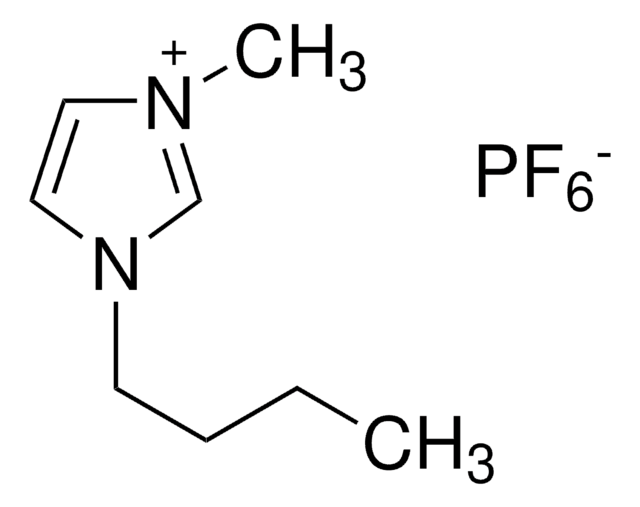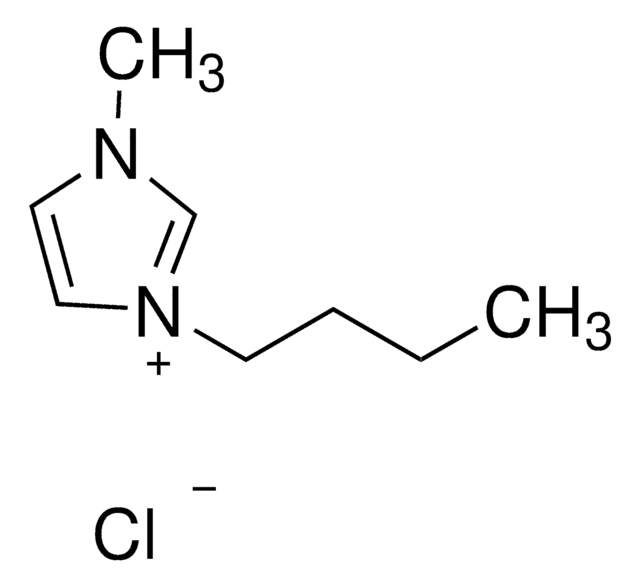推薦產品
品質等級
化驗
≥99%
形狀
liquid
成份
H2O, <500 ppm
雜質
≤500 ppm H2O
mp
1 °C
密度
1.454 g/cm3
應用
battery manufacturing
SMILES 字串
CCCCn1cc[n+](C)c1.FC(F)(F)S(=O)(=O)[N-]S(=O)(=O)C(F)(F)F
InChI
1S/C8H15N2.C2F6NO4S2/c1-3-4-5-10-7-6-9(2)8-10;3-1(4,5)14(10,11)9-15(12,13)2(6,7)8/h6-8H,3-5H2,1-2H3;/q+1;-1
InChI 密鑰
INDFXCHYORWHLQ-UHFFFAOYSA-N
尋找類似的產品? 前往 產品比較指南
一般說明
應用
相關產品
訊號詞
Danger
危險分類
Acute Tox. 3 Dermal - Acute Tox. 3 Oral - Aquatic Chronic 2 - Skin Corr. 1B - STOT RE 2 Oral
標靶器官
Nervous system
儲存類別代碼
6.1C - Combustible acute toxic Cat.3 / toxic compounds or compounds which causing chronic effects
水污染物質分類(WGK)
WGK 2
閃點(°F)
Not applicable
閃點(°C)
Not applicable
客戶也查看了
文章
Dr. Sun reviews the recent advances in solid-state rechargeable batteries and cover the fundamentals of solid electrolytes in solid-state batteries, the theory of ion conduction, and the structures and electrochemical processes of solid-state Li batteries.
Here, we present a short review of ionic liquid electrolytes used in state-of-the-art rechargeable batteries including high performance and low-cost aluminum batteries, non-flammable Li-based batteries, and high-cycling and stable dual-graphite batteries. We also outline the key issues explored so as to identify the future direction of IL development.
我們的科學家團隊在所有研究領域都有豐富的經驗,包括生命科學、材料科學、化學合成、色譜、分析等.
聯絡技術服務













